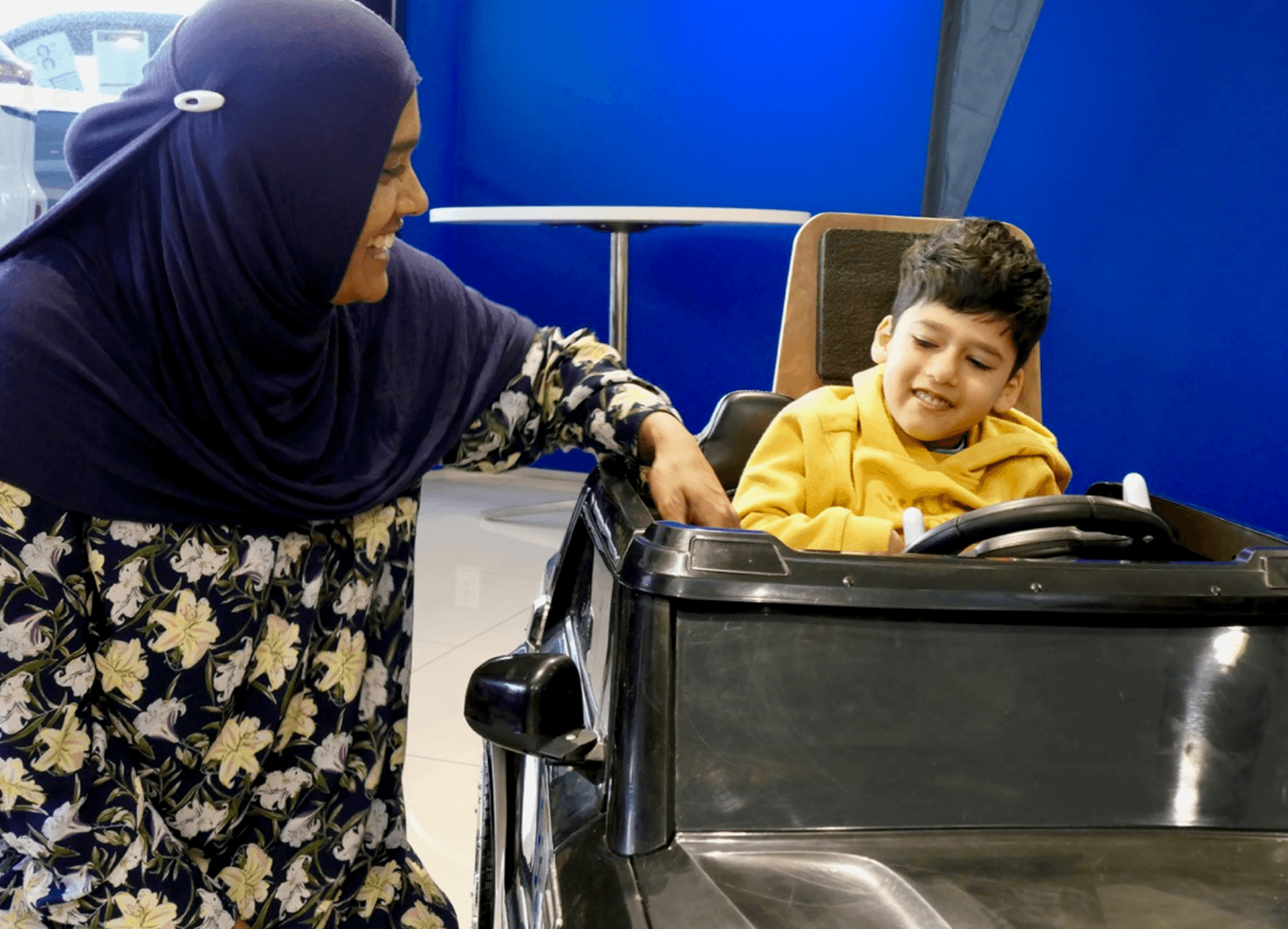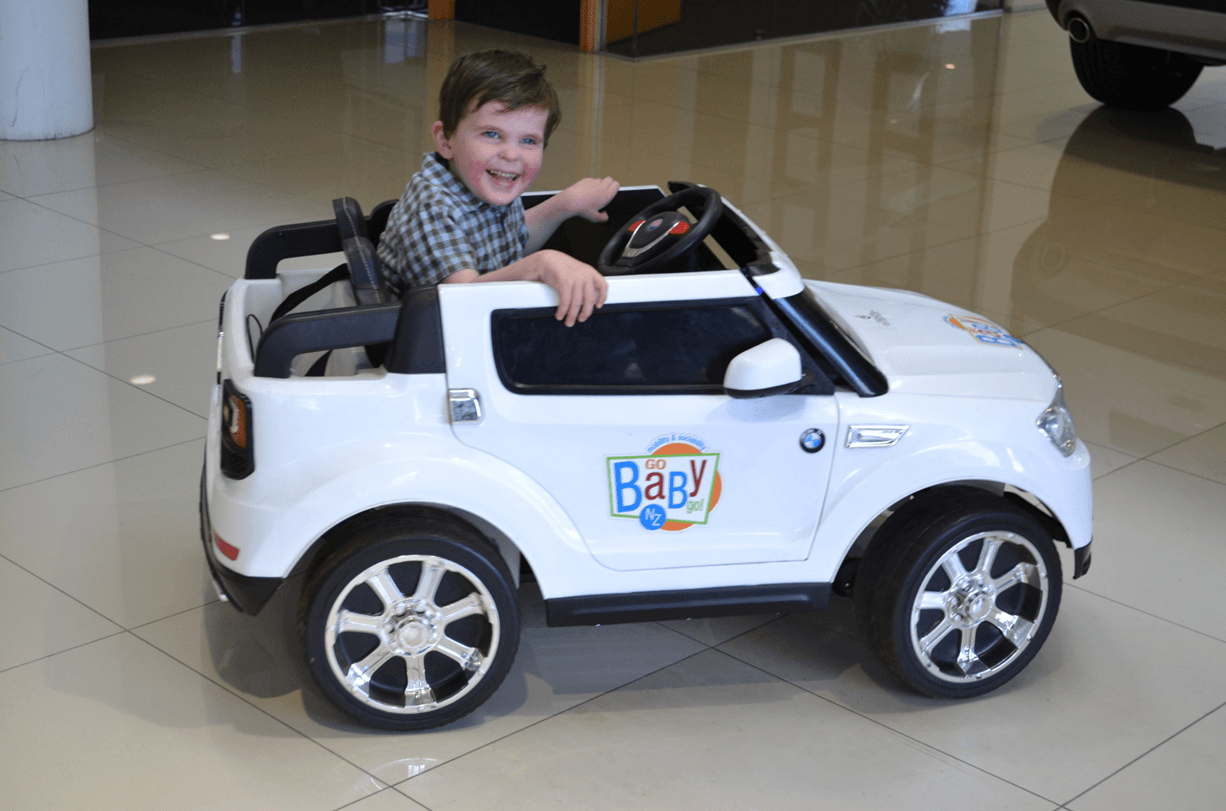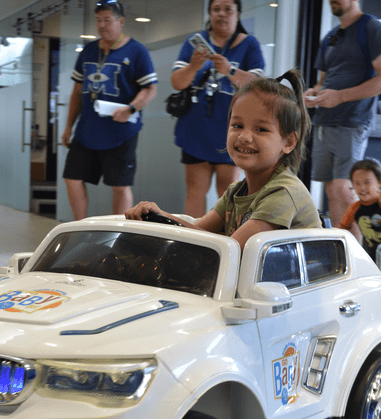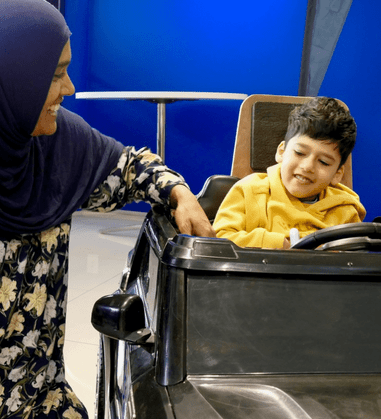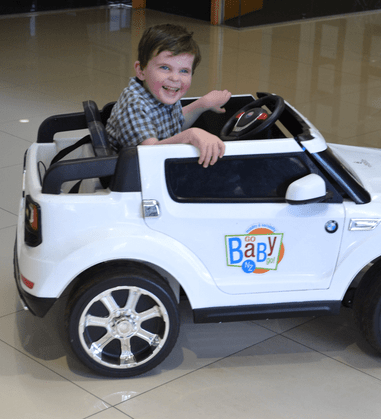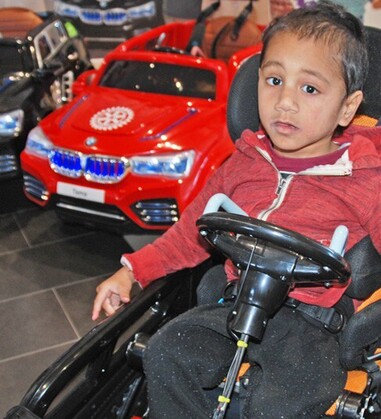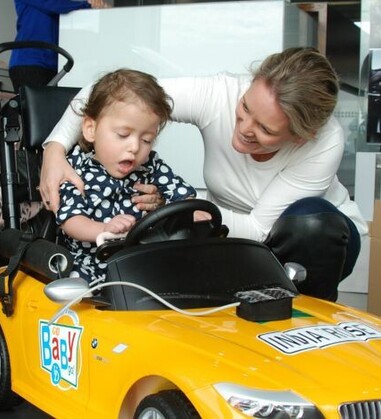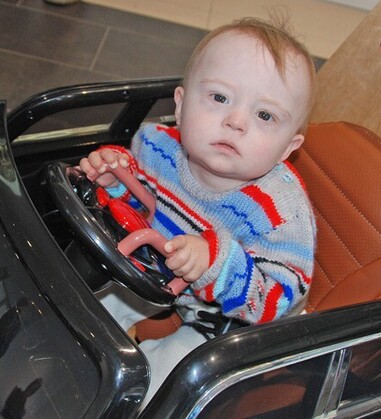
Go Baby Go Programme
Offers children with mobility impairment a way to explore their world in modified ride-on toy cars. Mobility creates independence and is important for socialisation, cognitive development and motor skill development.
Mobility Matters
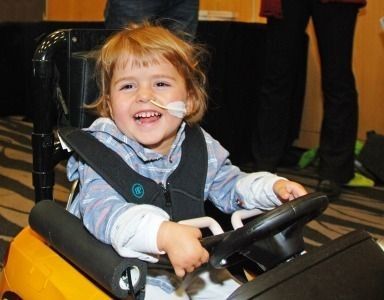
Go Baby Go is an outreach program that aims to empower children under the age of 6 with physical disabilities by providing them with an adaptive motorised toy car for mobility, participation, fun, and socialisation.
By engaging in exploration and play activities, infants, toddlers, and young children are able to interact with their environment and peers in a way that fosters learning and growth:
Self confidence
Problem solving skills (cause/effect)
How to move through space independently
Attention to task
Motor development
Play skills and social interactions with family and friends!
Many kids with disabilities are unable to be independently mobile, or require expensive, awkward, and potentially socially stigmatizing equipment in order to move and play with family and friends. Left stationary or heavily reliant on others for mobility and communication, these kids have reduced opportunities for social interaction and engagement. Thirty years of research has consistently demonstrated the cognitive, motor, language, and social benefits to children with motor disabilities when provided access to assistive technology during early childhood (6 months to three years old). However, there are many barriers for families in obtaining such devices; Go Baby Go hopes to fulfill this gap.
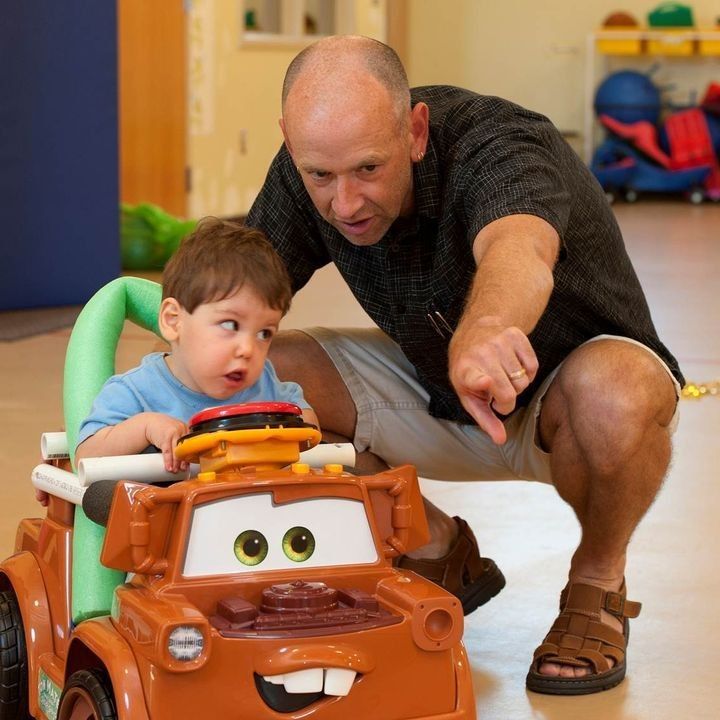
How It Started
The GoBabyGo programme, founded by paediatric researcher Cole Galloway, is a groundbreaking initiative aimed at improving mobility and independence for young children with movement challenges.
Professor of Physical Therapy at the University of Delaware, Galloway recognised the importance of mobility in a child's development, both cognitively and socially. In 2006, he launched GoBabyGo to provide children who were too young for electric wheelchairs with an opportunity to explore their surroundings. By modifying off-the-shelf toy cars in a cost-effective manner, Galloway made it possible for children who couldn't crawl or walk normally to join in on the fun at home or on the playground. The programme caters to children as young as six months old, allowing them to engage in active play and interact with their peers. Emphasising the role of fun in unlocking brain development and fostering exploration, Galloway has chosen not to patent his system but instead shares it with parents and medical professionals worldwide.
This collaborative approach ensures that more young children can experience the joy of independent movement while enhancing their overall well-being.
Parent Info
Getting a personalised Go Baby Go mobility vehicle for your child is exciting, but it does require some important steps to see if we can achieve the end result for your little one before a car can be promised. Child and car compatibility depends on weight, size, and support requirements. By having these conversations at the start, we try to avoid any disappointment if a car is not suitable.
To kick things off, you and your therapist or pediatrician need to fill out an application form. It covers general details about yourself, as well as important information about your child – like their age, medical condition, level of mobility, weight, and body measurements. Once reviewed, our team may need to reach out to gather any additional information that may help us assess whether a car can be adapted. We might need to delve deeper into key aspects like head control requirements, optimal placement for the throttle switch, hand function capabilities, switching ability and grasp/release movements. The journey towards getting a specialised Go Baby Go car involves collaboration between our team and yours in order to build the perfect ride for your precious one!
Clinician Info
A growing body of research is showing the cognitive, perceptual, language and social benefits of early powered mobility in toddlers and infants.
It has been shown that babies as young as seven months old have the capacity to learn to drive a powered mobility device with a joystick. Much like the growing research that signing for babies facilitates speech, independent mobility exposes toddlers to new possibilities before learned helplessness sets in, and the inborn drive to move is lost. Current thinking is that children need to move in order to learn about movement. Although some children with complex disabilities or visual impairment may face additional challenges when learning how to use a powered mobility device, it is important for all children to have access to these tools in order for them to reach their full potential.
The Go Baby Go concept addresses mobility issues in a fun and appealing toy:
Firstly and most importantly, the cars are enjoyable and likeable to the child, their friends, parents, and whanau.
Other children are drawn to the toddler using the car, creating opportunities for many more social interactions than might otherwise be possible.
Designed with safety in mind, the cars are not powerful enough to pose a danger if the toddler hasn't quite mastered all functions or loses concentration while driving.
They are an ideal height for child-friendly environments, allowing for eye-level face-to-face contact with peers.
Customisation of cars to enhance therapeutic goals while still providing a fun driving experience.
Toggle switches and adaptations on the car can encourage trunk control, lower limb stretches or weight bearing activities.
Keeping the wheels turning
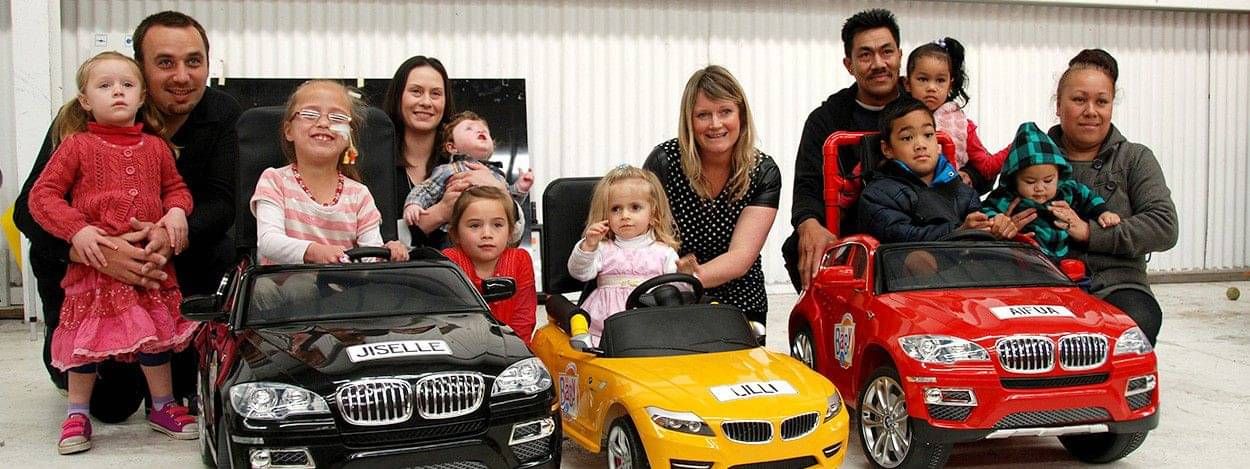
Not all cars presented are new, some are actually pre-loved. We like to help as many kids as possible with the use of a GBG car, so to help stretch the donation dollars plus look after our environment, we have a recyclery car program. When your child has outgrown the car or you are no longer using the equipment, please donate it back to the Go Baby Go program. The equipment is then fixed up and remodified for another child to enjoy and learn from!


How do I apply?
Contact us and we'll send you an application form designed to capture all the essential details about your child's current mobility needs and situation. You're taking the first step in exploring whether a GoBabyGo car is suitable for your little one. Please note there may be a waiting list for the right car match, but rest assured we are dedicated to trying to make it happen.
FAQs
What is the typical age-range of the children for a mobility car?
3 to 6 years. This is also weight and body length dependent, as we need to ensure the car will safely hold the child and any necessary equipment.
Who qualifies for a car?
Generally a child under 6 years of age (due to weight and measurements) who has difficulty independently moving through space.
Diagnoses may include but are not limited to: Cerebral Palsy, Spina Bifida, Genetic Syndromes, Down Syndrome, Congenital Heart Defect, Prematurity, Autism, and other neurologic or orthopedic conditions.
It is ideal for the child to have sufficient head control and to be at least working toward independent sitting.
If the child has seizures, it is ideal that the seizures are well-controlled.
How much does a family need to pay to receive a car for their child?
Nothing! We are extremely grateful to our generous benefactors who make it possible for children to receive a car at no cost to the family. We try to help all who apply but there are some instances when a car is not suitable.
What is the commitment asked of the family?
Complete the application form.
If required, attend a 30-minute fitting with your child at a designated location.
Pick up the car approximately 4 weeks after the initial fitting. Your child does not have to be present for the pick-up.
Safely and closely supervise your child as the car is utilised in a controlled environment on appropriate ground.
What benefits might you expect from your child using a car?
Increased opportunities for language and socialisation.
Improved exploration of the environment.
Increased quality of life and well-being for the child.
Increased sense of independence and initiation skills.
Improvement in motor and cognitive skills.
Improved participation in play with siblings/peers.
I don't live near Auckland. How can I get a car?
Depending on the complexity of the adaptions, you may need to make a trip to Auckland for your child’s fitting and for the pick-up of the car. Please email us at and we can try to help you navigate the situation and we will do our best to be flexible to your needs.
How is the car powered?
The electric vehicles are rechargeable, and battery powered. Battery's don't last forever so should your car need a new battery, they can be purchased from a number of retailers like Jaycar. Just ask them for a 22v, 13.4 amp hour gel battery.
How do we return our Go Baby Go! car so another child can benefit from it?
Please contact us and we can work with you to arrange pick up of the car.
Do you accept donations?
Yes, we do. Thank you for asking! Please contact the Kiwi Kids Charity team.
"Jiselle absolutely loves her car! We reside not far from the local school and there is a sheltered path on which Jiselle rides it every day to school and arrives in great style. Jiselle has never been this happy and loves it that for the first time she is able to ride on her own. We are truly grateful to the go Baby Go project!"
Sherilyn Dawson (recipient's grandmother)
"Hunter is loving his GoBabyGo car. When he is in it he is all smiles. He is still learning to control it while paying attention to where he is going, but as it is still so new we know this will come. He is already getting more control day by day and is always so excited to get in it and go. We are looking forward to using it lots in the coming months as we are out and about with friends, so he can join in and play with the other children. Thank you so much GoBabyGo for an amazing car that is improving Hunter’s physical and social skills in such a fun way!"
Katrina Grooby
"GoBabyGo and Rotary are amazing. Our grandson loves the car he received in Christchurch. I wish I had one!"
